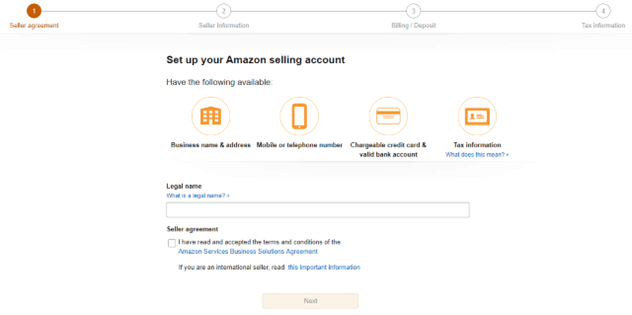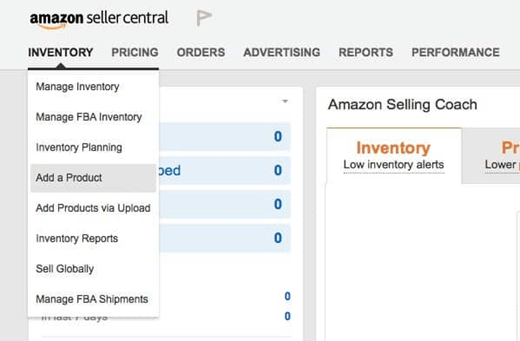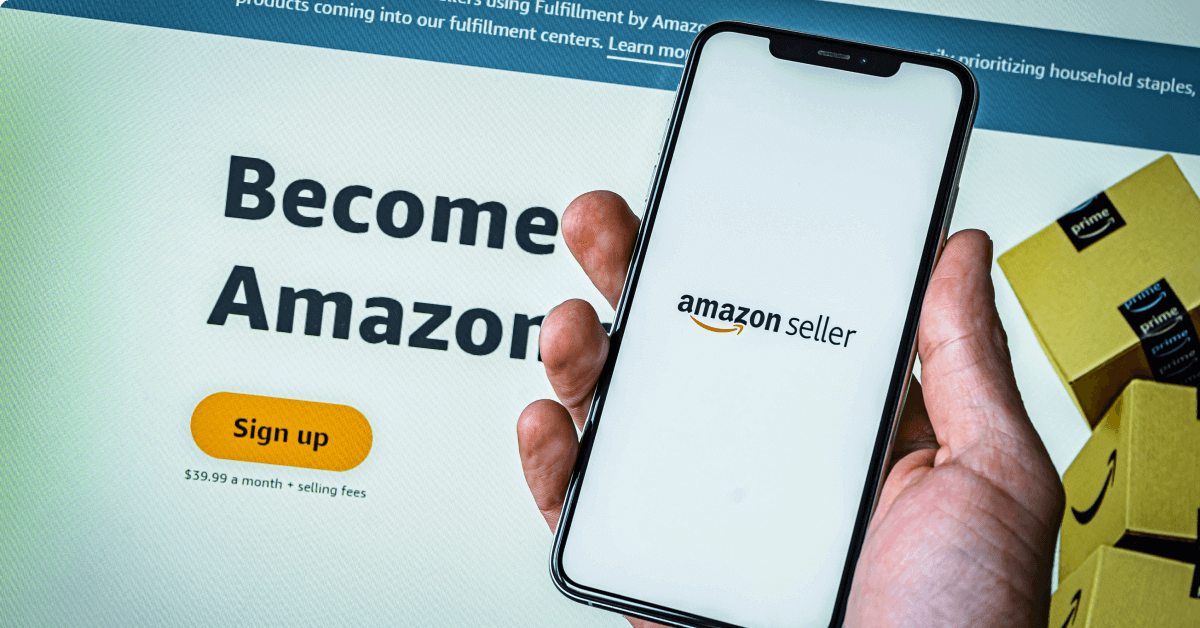The Amazon Marketplace is one of the most well-known and popular marketing channels for online businesses. This is partly due to the amazing brand-building potential that selling on Amazon provides, but it’s also owing to all those potential customers.
Maintaining an active presence on Amazon was formerly considered a nice-to-have for many shops, but many brands now consider it an absolute must. To achieve sales, your things must be offered where people shop, and people most surely shop on Amazon.
Amazon is continuously maturing and evolving in all aspects of its business, from enhancements to Amazon Creative, to the launch of Amazon Marketing Cloud, Amazon Moments, Buy With Prime, and so much more.
How to Sell on Amazon in 2023 – 11 Easy Steps
- Create a Business Plan
- Find a profitable niche
- Do market research
- Find a product to sell
- Identify Suppliers
- Order Placement
- Register an Account on Amazon
- Product Listing
- Inventory Management
- Customer Reviews Follow Up
- Product Listing Optimization
Eye Opening Stats About Selling on Amazon
- In 2021, Amazon’s total consolidated net sales revenue amounted to 469.82 billion U.S. dollars.
- Amazon spent 10.4 billion U.S. dollars on advertising in the United States in 2021. The e-commerce company consolidated its position as the largest U.S. advertiser in terms of spending for the third consecutive year.
- There are 153 million Amazon Prime members in the US (200 million worldwide).
How to Start Selling on Amazon – Detailed Guide
Selling on Amazon can indeed be a profitable venture for many, but it does require effort, dedication, and an understanding of the platform’s processes. Here are the basic steps to get started with selling on Amazon:
1. Create a Business Plan
Your business plan for Amazon should begin with establishing your primary goals—why are you selling on Amazon in the first place? What do you want or need to achieve from Amazon selling to consider it a “success?”
From there, creating a goal hierarchy can be beneficial. Knowing which goals are the most important can assist everyone in your organization in better understanding what to accomplish and how to execute it in ways that lead to the intended outcomes. It will also aid in resource allocation, as you will want to ensure that every business decision you make supports your primary goal.
Some things you’ll want to consider in building your business plan include:
Competition Analysis: Research and analyze the existing competition in your product category on Amazon. Identify the primary players and assess their strategies, strengths, and weaknesses. This will help you understand the competitive landscape and determine your unique selling proposition.
Long-Term Strategy: Decide whether selling on Amazon is a long-term endeavor or a temporary boost for your brand. Consider if you want to establish a lasting presence on the platform or if your goal is to leverage Amazon to increase brand awareness and drive traffic to your own website.
Time and Financial Investment: Determine how much time and money you are willing to invest in selling on Amazon. Understand the costs associated with inventory management, marketing campaigns, advertising, fulfilment, and customer service. Set a budget and allocate resources accordingly to ensure you can sustain your operations and achieve your desired goals.
2. Find a profitable niche
When it comes to finding a profitable niche on Amazon, conducting thorough market research is key. Here are some strategies to help you identify a niche with high demand and potential for profit:
- Analyze best-selling categories and identify niches aligned with your interests.
- Utilize Amazon’s tools like Best Sellers Rank and Amazon Movers & Shakers to spot popular and trending products.
- Conduct keyword research to find high-demand and low-competition keywords.
- Read customer reviews to identify unmet needs or areas for improvement in existing products.
- Study competitors within the niche and look for opportunities to differentiate yourself.
- Consider focusing on sub-niches within broader categories for targeted positioning.
- Validate demand by checking sales volume, competition, and historical data.
- Conduct small-scale tests to gauge customer interest and refine your strategy.
3. Do market research
Consider the following points while you conduct your research:
- What are the current best-sellers in your market, category, or specialty, and what can you learn from them?
- Do the top listings in your category feature a lot of images, detailed product information, and/or reviews?
- How important does offering Prime shipping appear to be in your industry?
- What is the general feeling of your industry’s best-sellers and worst-sellers?
- When reading reviews for similar products, take note of what customers enjoy, dislike, have problems with, or wish they knew before purchasing.
- Contact others in your sector to discover more about their Amazon selling experiences and how they approach the space similarly or differently from other platforms.
4. Find A Product to Sell
When picking something to sell on Amazon, there are many things to look for:
Price: The ideal selling price range is between $10 to $50 for most products. That’s low enough that you will get impulse buys and just high enough the profit margin is worth it.
Weight: The lighter a product is, the cheaper the shipping is. Shipping costs are a major factor behind the profitability of Amazon.
Demand: Find similar products already being sold on Amazon. Enter their best-seller rank into this Amazon sales estimator. Will you sell enough to make it worthwhile?
Competition: If there are more than 10 similar products with hundreds of glowing reviews, it will be tough to break in. Find products with only a few serious competitors.
Durability: Amazon has a great return policy for customers. So, if your product tends to break easily, it will come back to bite you.
You can utilize tools like Jungle Scout, Bqool, or Viral Launch to gather valuable data such as sales estimates, product rankings, and keyword research.
You can try to explore Amazon and brainstorm good product ideas, or you can put data to work with a tool to find products that meet the criteria above.
5. Identify Suppliers
When sourcing new products for your Amazon business, consider the following factors when choosing a supplier:
Product Quality: Request samples to assess the look and feel of the products.
Pricing and Order Quantity: Evaluate the price per product and check for any minimum or maximum order quantities.
Supplier Communication: Ensure the supplier is responsive and provides multiple contact options.
Order Volume and Capacity: Determine if the supplier can handle your required order volume and restock inventory promptly.
Shipping Speed and Origin: Inquire about the shipping timeline and where shipments originate from.
6. Order Placement
Once you have identified the suppliers you want to work with, it’s time to place orders for your initial inventory. Here are some key steps to keep in mind.
Communicate clearly: Maintain open and clear communication with suppliers, providing all necessary order details and requirements.
Track order status: Regularly check in with suppliers to track order progress and shipping timelines.
Sample verification: Consider ordering product samples to assess quality before placing larger orders.
Establish terms: Clarify payment terms, shipping terms, return policies, and any additional fees or charges.
Implement quality control: Conduct inspections upon receipt to ensure the products meet your standards and address any issues with the supplier.
Build relationships: Foster positive relationships with suppliers through regular communication and feedback.
7. Register an Account on Amazon
To sell on Amazon, you’ll first need to set up your basic free account. Afterward, head to the Amazon Seller Plans page to sign up for an Individual or Professional selling plan.

The Individual plan, where you pay a small fee for each sale, is designed for people selling under 40 products per month. It’s useful to get started with selling handmade products.
Otherwise, go with a Professional plan, where you pay a monthly fee. The more you sell, the less this fee matters.
The sign-up process is fairly short, but you’ll need a few things handy:
- Your business name
- Your address and contact information
- A credit card for billing
- A phone number you can access (confirm the number during the sign-up process)
- Your basic tax identity information
It should take no more than 10 minutes if you have all this information ready.

After that, you can access your Amazon Seller Central account.
8. Product Listing
When listing products, there are two possibilities.
You can add your inventory to the listing page if you sell the same products as others, as in retail arbitrage. You fill out a simple one-page form with your price, quantity, quality, and shipping details.
The more usual scenario is when you have to create your listing. Log in to your Seller Central account and navigate to “Inventory > Add a Product.”

This process can take some time. There are six tabs (or pages) of forms you’ll need to fill out.
This includes details like:
- Product name
- Brand name
- Universal Product Code (UPC) or European Article Number (EAN)
- Stock-keeping unit (SKU) number
- Description
- Keywords
- Images
Doing this for several products can be quite time-consuming, but it is a necessary step. Even though some details are optional (like description), these are important for getting more sales, so don’t skip them.
9. Inventory Management
It’s important to keep track of your inventory so you don’t sell things you don’t have, which can lead to late deliveries. Your selling account has a whole section for inventory management, including all the tools.

You can quickly change it if you get new stock. But what if you also sell things online using your e-commerce website? Fortunately, you can utilize the Amazon Application Programming Interface (API) to maintain your inventory on both sites in sync when you make sales.
If you don’t already have a website, try using one of the following content management systems (CMSs) that instantly integrate with Amazon:
You can log your inventory in one of them, and your Amazon seller account will be automatically updated.
10. Customer Reviews Follow Up
Provide exceptional customer service and proactively seek customer feedback. Respond promptly to customer inquiries, address any concerns, and resolve issues in a professional manner. Encourage satisfied customers to leave positive reviews, as they can significantly impact your sales and product rankings on Amazon.
11. Product Listing Optimization
Continuously optimize your product listings based on customer feedback, market trends, and data analysis. Experiment with different pricing strategies, product variations, or bundling options to boost sales. Monitor your competitors and adjust your listings accordingly to stay ahead in the market.
Frequently Asked Questions
Is selling on amazon worth it?
For many sellers and brands, absolutely!
With the right products, sophisticated marketing tactics, helpful tools, and seller support, brands selling on Amazon can see great success. Although the competition for almost every category on the marketplace is fierce, there are still plenty of opportunities for brands to thrive.
Is it hard to sell on Amazon?
While many people earn a good living selling on that website, quite a few struggle to do well. It isn’t easy or quick, but the steps to begin selling on Amazon are simple.
Do you have to pay to start selling on Amazon?
The Individual plan costs $0.99 per sale, while sellers using the Professional plan pay $39.99 per month, no matter how many items they sell. If you sell more than 40 items a month, the Professional option makes a lot of sense. Whichever plan you select, don’t worry about making the wrong choice—you can change plans at any time.
Conclusion:
At first glance, Amazon can seem like a challenger to your small business: a global marketplace, a massive audience, a go-to destination for consumer search. However, when approached properly, Amazon can actually help entrepreneurs make money online.
While the steps to sell on Amazon are straightforward, success requires carefully selecting the correct products and optimising your listings. Even after achieving success, staying ahead necessitates ongoing maintenance.

